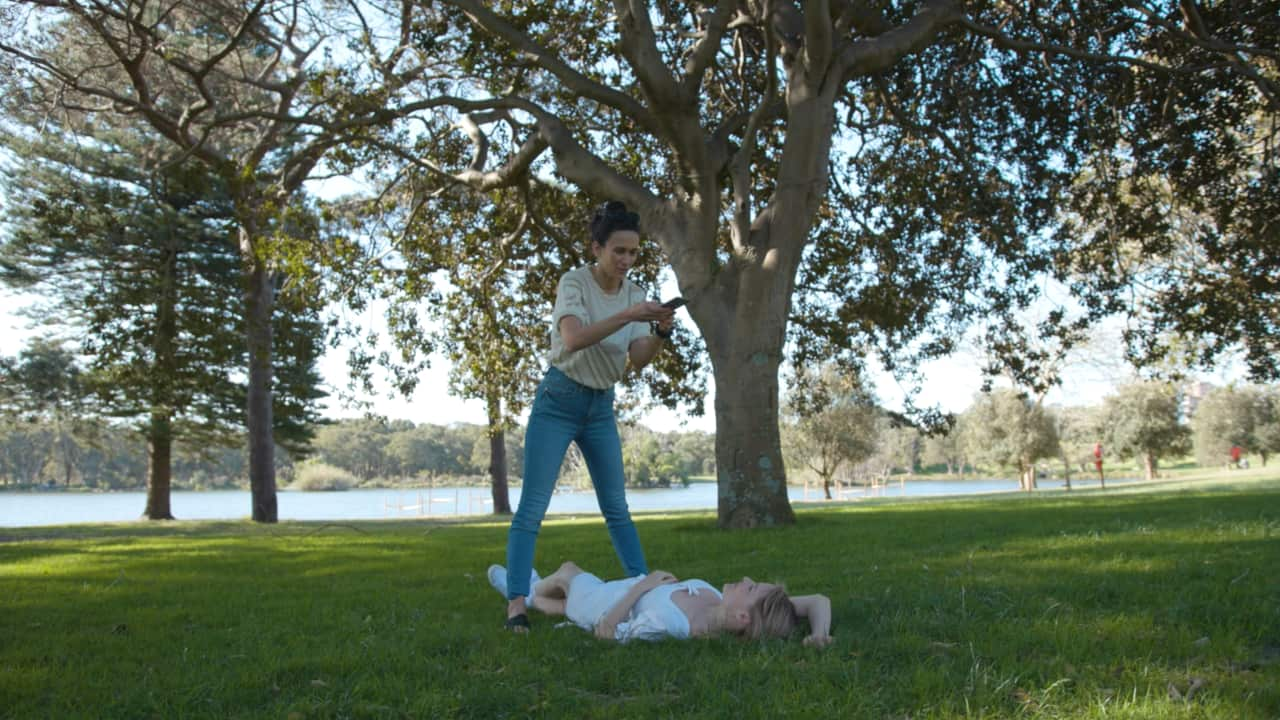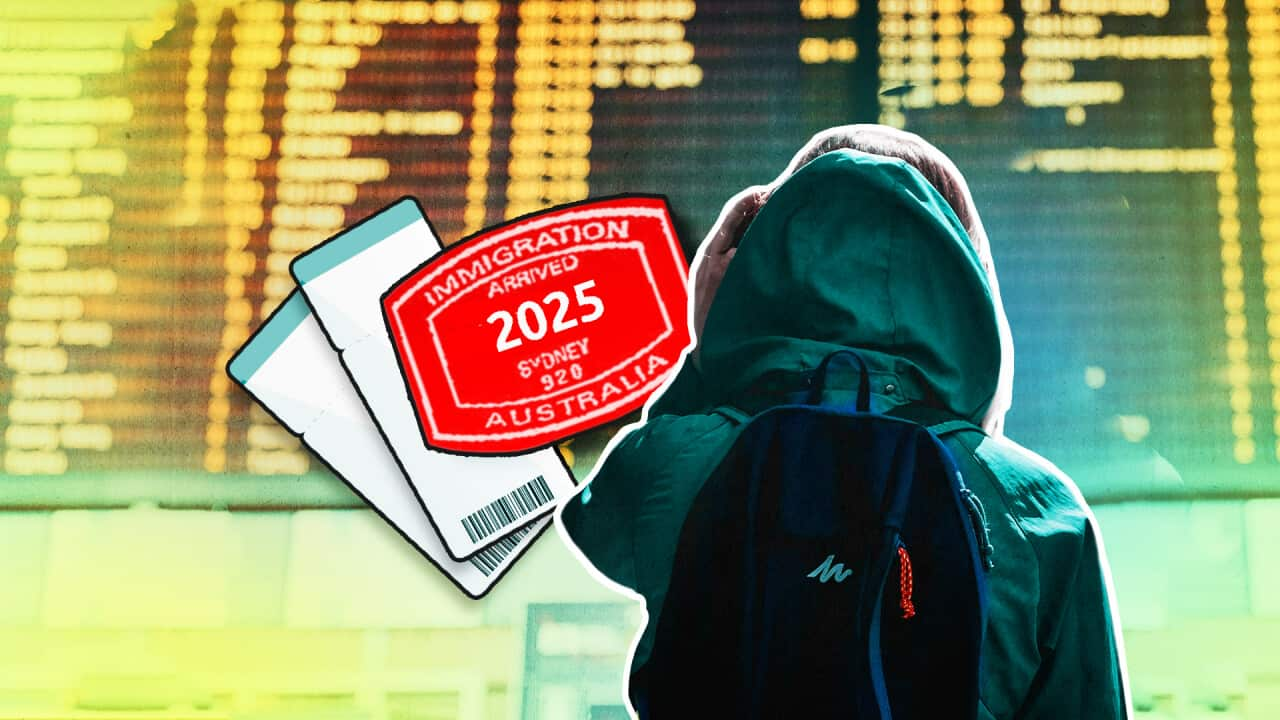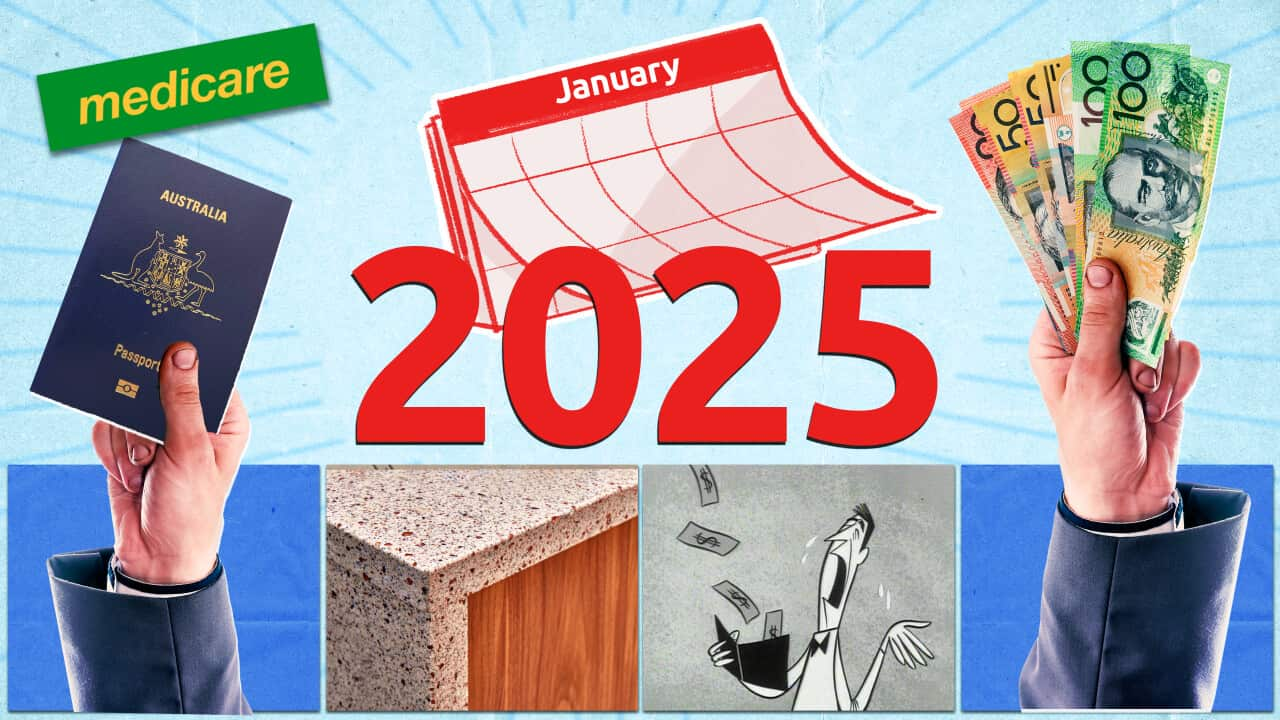When The Feed’s Elise Potaka asked me if I’d fake being an influencer for six months, I was ready to jump.
I had lost my faith in Instagram and social media long ago. This medium that had been a part of my life every day for years, that I had used for creativity and connection, had made me unhappy, anxious, depressed and genuinely confused.
Things had shifted on the platform and one day I awoke to a feed of endless self-promotion. Not just from celebrities but friends, and friends of friends. Overnight everyone seemed to have a personal brand and a tightly curated niche. Where had all the ugly content gone?

Calliste and Elise were forced to crowdsource images from their friends and family to keep the fake account going. Source: The Feed
No longer are brands simply interested in celebrities with millions of followers, they’re shifting focus to accounts with smaller and tighter audiences, people with just a few thousand followers. Called micro-influencers, they’re seen as the future of advertising. It’s insidious and it’s changing our feeds, what we choose to share and why we share it.
THE PITCH
Our pitch to The Feed was simple. We would create a fake influencer persona with the aim of attracting brands and sponsored content to find out how the whole game works. Along the way, we’d record the results. Once we explained the size of the influencer marketing industry and its growing impact on our spending habits and lives, our editors agreed, albeit with careful oversight.
The influencer advertising industry operates off mutual back-scratching, brands rely on influencers, influencers rely on brands and so on ad nauseum. It benefits no one to dish the dirt. So it’s very hard to get an honest, accurate picture of how anything truly works looking from the outside-in.
I realise I fit a pretty shallow and predictable set of “brand-friendly” cliches. I’m white, blonde and thin. So I figured why not weaponise these to go inside the belly of the beast? Use the industry’s own ridiculous cliches against it, with journalistic intent, to lure in brands and lift the curtain on this smoke and mirrors game. And setting up a fake account was the only way we could realistically show what’s going on in the world of influencer marketing.
THE RUSE
So I put both dignity and pride aside and under the cover of COVID19 embraced a new life as Mia Wilde or @thatcoastalgirl, a bogus health and wellness, fitspo influencer living by the sea. A banal, aspirational nightmare that brands would hopefully find irresistible.
Her life and activities were informed by deep diving into health and wellness influencer accounts. We followed account after account, filling Mia’s feed with shiny, white and tan images of beaches, linen, smoothies and activewear. We cross-referenced cliches and formed a filtered influencer Frankenstein.
View this post on Instagram A post shared by MIA 🌻WILDE (@thatcoastalgirl)
We faked her life, her interests and her diet. I don’t live by the sea, exercise on the regular or practise yoga. I know nothing about crystal healing. While Mia was out running and cooking delicious breakfasts, I was hungover or hunched over a computer. I’d push messy rooms out of the way to take a photo in a tidy looking space. I’d buy healthy food from cafes and plate them up to look home-made. I’d run circles for five minutes in a tiny suburban park to make it seem like I’d gone for a 5km run. Half of Mia’s posts were not even made or written by me but by my producer Elise. We outsourced much of the content from family and friends. The ruse was elaborate, nuanced and multi-layered.
Not only did we fake her life and content, we faked her influence as well. We bought fake followers, we bought fake likes and joined influencer pods where we made agreements to like and comment and engage with other influencer’s content in exchange for the same in return. She was a fake influencer, with fake influence. And yet none of that mattered. We still, ultimately, got deals with brands who sent us free products. Done for the purpose of investigation, no commercial gain was made through this process.
CHALLENGES
Faking Mia’s life was incredibly hard. Much harder than we both anticipated. At the outset, we thought we could spend a couple of days making a stash of photos and use a scheduler to post them automatically over the course of a couple of months. No sweat. Set and forget.
How naïve that proved. We ran out of content very quickly.
These days, influencers exist as three dimensional online avatars. You have to make stories, you have to make reels, go live or share content to Instagram TV. Then there’s YouTube, TikTok, Facebook, blogs, tutorials, video diaries outside of this. And you have to do all of this, while somehow being “authentic”.
Clocking out of my regular journalist mode and switching to Mia was also draining. I had to fit it around a full-time job making documentaries for SBS Dateline. Finding new ways to keep her feeling authentic was hard. Even though there were two of us running the account, we still ultimately didn’t post with the frequency and quantity of most real influencers.
Inevitably some bits of the real me did slip through simply because of the sheer amount of content needed to keep an account running these days. I recruited people in my real life – my partner, friends and dog – as supporting characters in Mia’s fake life. So every now and then the façade would inevitably fall. I’m also, quite simply, not a good actor.
But somehow this constructed cast was able to convince an influencer agency and brands that Mia Wilde was real, and the perfect person to spruik their products. From coconut yoghurt to g-strings, magnetic lashes to detox tea - we ended up deep in the world of sponsored content, or ‘sponcon’ as it’s known in the influencer industry. We were able to get an inside look into how advertisers recruit influencers, and the nature of the deals they make.

87 per cent of people globally say that an influencer has driven them to make a purchase. Source: The Feed
IMPACTS
Perhaps the most absurd aspect of all of this was faking Mia’s life amid a pandemic. While Mia was out living her best life, the real me was struggling with having my life and work turned upside down. What I wasn’t showing were the 9 hours a day the real me spent on a computer, remote producing documentaries, no longer able to be in the field. What I wasn’t showing was my struggle at having my future plans suddenly spiked. The breakdowns. The online therapy sessions to cope.
As someone who suffers from anxiety and depression, who has seen therapists (not nearly enough) to work through it, this whole thing has crystallised just how harmful the industry’s stereotypes are. Playing into them was confronting. It became very apparent very quickly just how damaging and misleading these kinds of “wellness” posts can be. On one hand, I was mimicking captions writing that Mia had flaws and struggles, but on the other filtering them out, posing them away, to maintain her perfect “healthy” life. This is gameplay straight from the wellness influencer handbook. The effect is a form of gaslighting – as a follower, the caption tells you the person is normal, imperfect, human but the flawless picture leaves you ultimately feeling otherwise. The lowest point of this whole experiment was having multiple best mates who I’d asked to follow the account tell me they had to quietly unfollow - even knowing it was fake, it was making them feel bad.
CONCLUSIONS
Faking it on Instagram is nothing new. People say they know social media isn’t real, that influencers' lives aren’t real. And yet influencer marketing has become more potent than ever. According to the platform, 87 per cent of people globally say that an influencer has driven them to make a purchase. So we suspend our disbelief daily.
I leave this experiment having peeked behind the curtain on this brave new world. All that’s there is an influencer “Wizard of Oz” pulling his leavers. I tasted the mouse wheel nightmare that is influencing. Far from glamorous, far from easy, it’s a stressful, mostly thankless 24/7 gig that ultimately paid me in undies and coconut water and diarrhetic teas. There is no magic. But all of us are suffering the consequences.
I hope that this experiment is, at the very least, a timely reminder to pause and eject from the mindless scroll, that it forces consumers and Instagram users to question what they see, and ultimately gives you back some power to truly log off.
Throughout the process, care was taken to make sure any impact to Mia’s followers was minimal. Watch Calliste Weitenberg & Elise Potaka’s four-part series on the influencer industry on The Feed at 10pm tonight on SBS, and on . To find out just how far they got with this investigation - tune in next Tuesday.
Stream free On Demand

Tuesday March 16, 2021












